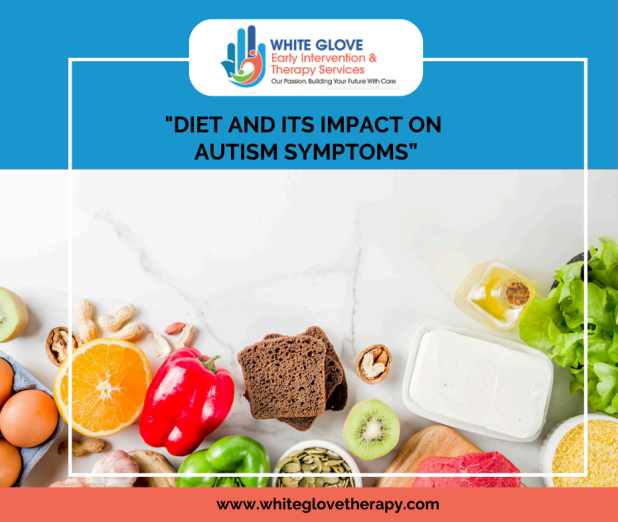Autism Spectrum Disorder (ASD) is a complex neurodevelopmental condition characterized by a range of challenges in social interaction, communication, and repetitive behaviors. While the exact causes of autism remain elusive, researchers and families alike are exploring various avenues to manage symptoms and improve the quality of life for individuals with ASD. One such avenue gaining attention is the impact of diet on autism symptoms.
The Gut-Brain Connection:
Recent studies have shed light on the intricate connection between the gut and the brain, often called the “gut-brain axis.” Emerging evidence suggests that the microbial composition of the
gut may influence brain function and behavior. Individuals with autism frequently exhibit gastrointestinal issues, leading researchers to investigate the potential link between gut health and autism symptoms.
Gluten-Free and Casein-Free Diet:
One of the most widely discussed dietary interventions for autism is the gluten-free and casein-free (GFCF) diet. Gluten is a protein found in wheat, barley, and rye, while casein is a protein in dairy products. Advocates of the GFCF diet propose that eliminating these proteins from the diet may alleviate autism symptoms by reducing inflammation and promoting better digestion. Although some parents report positive changes in their children’s behavior and communication skills after adopting the GFCF diet, scientific evidence remains inconclusive. Some studies suggest potential benefits, while others find no significant improvements. The variability in responses underscores the need for personalized approaches to dietary interventions.
The Ketogenic Diet:
The ketogenic diet, characterized by a low-carbohydrate and high-fat intake, has gained popularity for its potential impact on neurological conditions. Research suggests that the ketogenic diet may influence brain function and reduce seizure activity, which is common in some individuals with autism. While studies are ongoing, some parents have reported improvements in their children’s attention, behavior, and social interactions after implementing a ketogenic diet.
Nutrient Supplementation:
Another avenue of exploration is nutrient supplementation, particularly focusing on vitamins, minerals, and omega-3 fatty acids. Some individuals with autism may have nutrient deficiencies or imbalances, and addressing these through supplementation could potentially impact symptoms. Omega-3 fatty acids, found in fish oil, have been particularly interesting due to their role in brain development and function. Exploring the impact of diet on autism symptoms is a complex and evolving area of research.
While some individuals and families report positive outcomes with dietary interventions, the scientific evidence is mixed, and the effectiveness of these approaches varies from person to person.
It is crucial to approach dietary changes for individuals with autism under the guidance of healthcare professionals and registered dietitians. A balanced and individualized approach is essential, considering factors such as gut health, nutrient status, and specific dietary sensitivities. As research continues, a deeper understanding of the intricate relationship between diet and autism may provide new avenues for personalized interventions and improved quality of life for individuals on the autism spectrum.

Here are three examples of child-friendly baby food options for each category:
Gluten-Free and Casein-Free Diet:
Banana-Oat Pancakes: These pancakes are made with gluten-free oat flour and mashed bananas, providing a delicious and nutritious breakfast option for babies. Oats are naturally gluten-free, and bananas add natural sweetness and potassium.
Roasted Sweet Potato Fries: Sweet potatoes are naturally gluten-free and rich in vitamins A and C. Cut sweet potatoes into fry shapes, toss with olive oil and seasonings, and roast until tender for a tasty finger food that babies will love.
Quinoa and Vegetable Puree: Cook quinoa until soft, then blend it with steamed vegetables like carrots, peas, and broccoli. This nutrient-rich puree is gluten-free, dairy-free, and packed with protein, fiber, and essential vitamins for growing babies.
Ketogenic Diet:
Avocado Egg Salad: Mash ripe avocado with hard-boiled eggs, a splash of lemon juice, and seasonings to create a creamy and satisfying salad. Avocado provides healthy fats, while eggs are rich in protein, making it an ideal option for a ketogenic diet.
Zucchini Noodles with Pesto: Spiralize zucchini into noodle shapes and toss with homemade or store-bought pesto sauce. Zucchini is low in carbs and high in fiber, making it a perfect vegetable for the ketogenic diet. Pesto adds flavor and healthy fats.
Coconut Berry Smoothie: Blend coconut milk with mixed berries (such as strawberries, blueberries, and raspberries) and a scoop of coconut oil or MCT oil for a refreshing and ketogenic-friendly smoothie. Berries are relatively low in carbs and high in antioxidants, while coconut milk provides healthy fats.
These examples provide tasty and nutritious options for babies following a Gluten-Free and Casein-Free diet or a Ketogenic diet. Always consult with a healthcare professional before introducing new foods to your baby’s diet, especially if they have specific dietary needs or restrictions.

















































